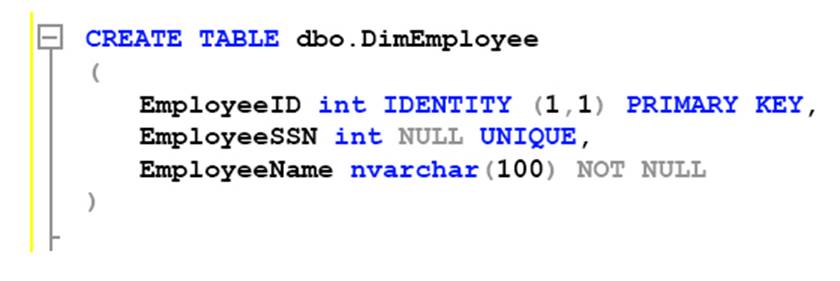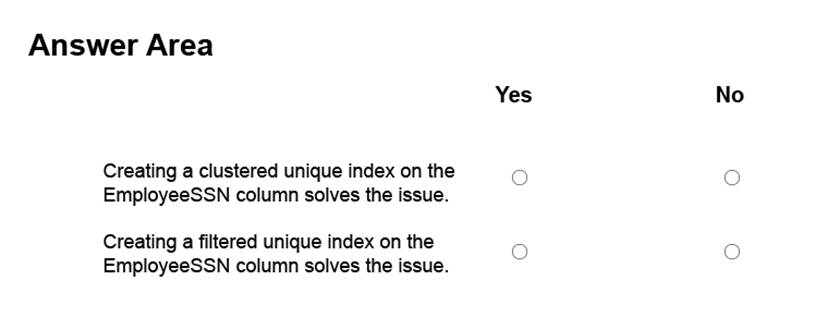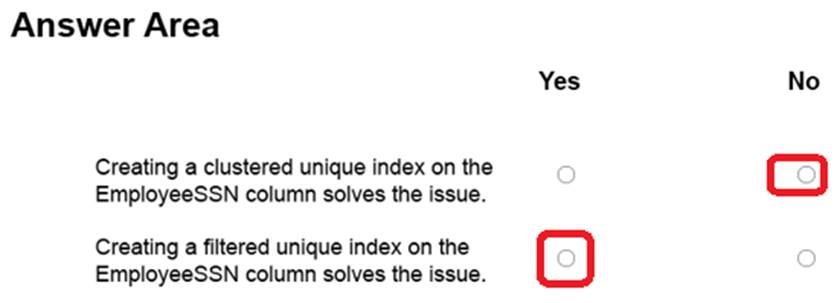- All Exams Instant Download
You manage a data warehouse in a Microsoft SQL Server instance. Company employee information is imported from the human resources system to a table named Employee in the data warehouse instance. The Employee table was created by running the query shown in the Employee Schema exhibit. (Click the Exhibit button
HOTSPOT
You manage a data warehouse in a Microsoft SQL Server instance. Company employee information is imported from the human resources system to a table named Employee in the data warehouse instance. The Employee table was created by running the query shown in the Employee Schema exhibit. (Click the Exhibit button.)

The personal identification number is stored in a column named EmployeeSSN. All values in the EmployeeSSN column must be unique.
When importing employee data, you receive the error message shown in the SQL Error exhibit. (Click the Exhibit button.).

You determine that the Transact-SQL statement shown in the Data Load exhibit in the cause of the error. (Click the Exhibit button.)

You remove the constraint on the EmployeeSSN column. You need to ensure that values in the EmployeeSSN column are unique.
For each of the following statements, select Yes if the statement is true. Otherwise, select No.
NOTE: Each correct selection is worth one point.

Answer: 
Explanation:
With the ANSI standards SQL:92, SQL:1999 and SQL:2003, an UNIQUE constraint must disallow duplicate non-NULL values but accept multiple NULL values.
In the Microsoft world of SQL Server however, a single NULL is allowed but multiple NULLs are not.
From SQL Server 2008, you can define a unique filtered index based on a predicate that excludes NULLs.
References: https://stackoverflow.com/questions/767657/how-do-i-create-a-unique-constraint-that-also-allows-nulls
Latest 70-767 Dumps Valid Version with 136 Q&As
Latest And Valid Q&A | Instant Download | Once Fail, Full Refund
Subscribe
Login
0 Comments
Inline Feedbacks
View all comments

